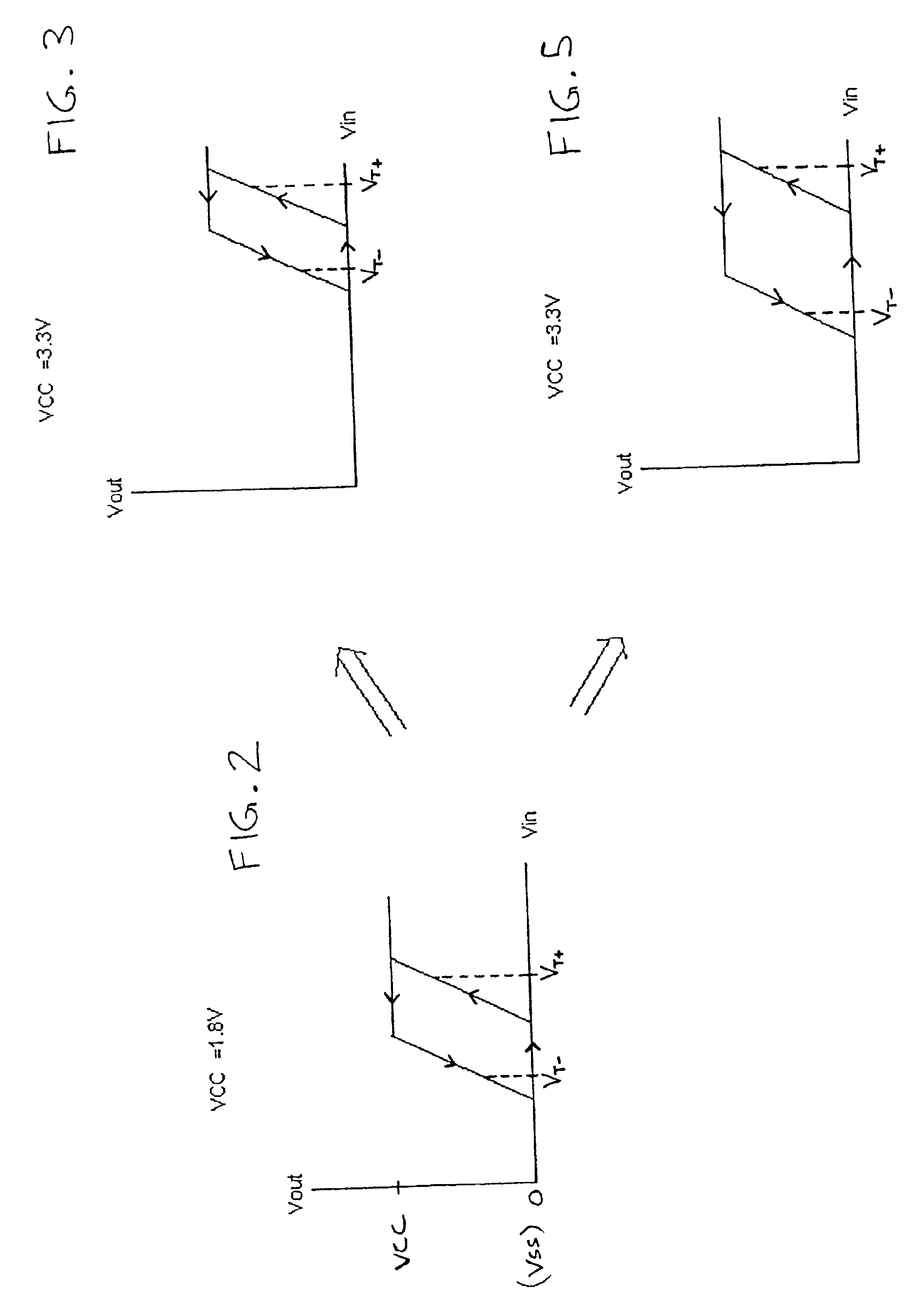Schmitt trigger circuit with adjustable trip point voltages
a trigger circuit and trip point technology, applied in the field of digital circuits and electronics, can solve the problems of not being recognized at all, unduly delayed actual input voltage transition at the output, and noisy operation of digital systems
- Summary
- Abstract
- Description
- Claims
- Application Information
AI Technical Summary
Problems solved by technology
Method used
Image
Examples
Embodiment Construction
[0019]FIG. 1 is a circuit diagram of a prior art Schmitt trigger circuit 10 implemented using CMOS (complementary metal-oxide semiconductor) technology in which n-channel (NMOS) and p-channel (PMOS) metal oxide semiconductor field-effect transistors are combined, typically on a common substrate. CMOS-based implementations of Schmitt triggers are generally advantageous since they provide a high input impedance, can be readily designed to have threshold voltages that are roughly symmetrical to one-half the supply voltage, consume low power, and are easily integrated with other CMOS circuitry. CMOS Schmitt Triggers are discussed, for example, in “CMOS Schmitt Trigger B A Uniquely Versatile Design Component”, Fairchild Semiconductor Application Note 140 (June 1975) and in Kuang et al., “PD / SOI CMOS Schmitt Trigger Circuits with Controllable Hysteresis”, International Symposium on VLSI Technology, Systems, and Applications, Hsinchu, Taiwan (April 2001), and the contents of each are incor...
PUM
 Login to View More
Login to View More Abstract
Description
Claims
Application Information
 Login to View More
Login to View More - R&D
- Intellectual Property
- Life Sciences
- Materials
- Tech Scout
- Unparalleled Data Quality
- Higher Quality Content
- 60% Fewer Hallucinations
Browse by: Latest US Patents, China's latest patents, Technical Efficacy Thesaurus, Application Domain, Technology Topic, Popular Technical Reports.
© 2025 PatSnap. All rights reserved.Legal|Privacy policy|Modern Slavery Act Transparency Statement|Sitemap|About US| Contact US: help@patsnap.com



